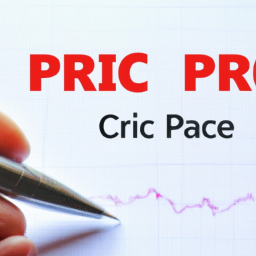
Price Action Trading: A Guide to Understanding and Utilizing this Powerful Trading Strategy
Introduction
Price action trading is a popular trading strategy that focuses on analyzing and making trading decisions based on the price movement of an asset. Unlike other technical analysis methods that rely on indicators and oscillators, price action traders solely rely on the price chart and its patterns to predict future price movements. This article aims to provide a comprehensive guide to price action trading, including its principles, strategies, and benefits.
Principles of Price Action Trading
Price action trading is based on a few key principles that guide traders in their decision-making process:
- Price reflects all available information: Price action traders believe that all relevant information affecting an asset’s price is already reflected in the price chart. Therefore, they focus solely on analyzing the price movement itself.
- History repeats itself: Price action traders believe that market patterns and behaviors tend to repeat over time. By studying historical price patterns, they can anticipate potential future price movements.
- Support and resistance levels: Price action traders pay close attention to support and resistance levels, which are areas on the price chart where the price has historically reversed or stalled. These levels provide valuable information for making trading decisions.
Strategies for Price Action Trading
Price action trading offers a variety of strategies that traders can employ to identify high-probability trading opportunities. Here are a few popular strategies:
- Trend trading: This strategy involves identifying and trading in the direction of the prevailing trend. Traders look for price patterns that indicate a continuation or reversal of the trend.
- Breakout trading: Traders using this strategy focus on price patterns that indicate a breakout from a well-defined support or resistance level. They enter trades when the price breaks out and confirms the new trend.
- Reversal trading: This strategy involves identifying price patterns that suggest a potential trend reversal. Traders look for signs of exhaustion in the current trend and enter trades in anticipation of a reversal.
Benefits of Price Action Trading
Price action trading offers several benefits for traders:
- Simplicity: Price action trading eliminates the need for complex indicators and oscillators, making it a straightforward and easy-to-understand strategy.
- Flexibility: Price action trading can be applied to any financial market, including stocks, forex, commodities, and cryptocurrencies. Traders can adapt the strategy to suit their preferred trading style.
- Accuracy: By focusing on the price chart and historical price patterns, price action traders can develop a keen sense of market dynamics and improve their ability to predict future price movements.
Conclusion
Price action trading is a powerful strategy that allows traders to make informed trading decisions based solely on the price movement of an asset. By understanding the principles and employing various strategies, traders can harness the potential of price action trading to enhance their trading performance. Remember, practice and experience are essential to master this strategy, so start analyzing price charts and exploring different price patterns to unlock the full potential of price action trading.